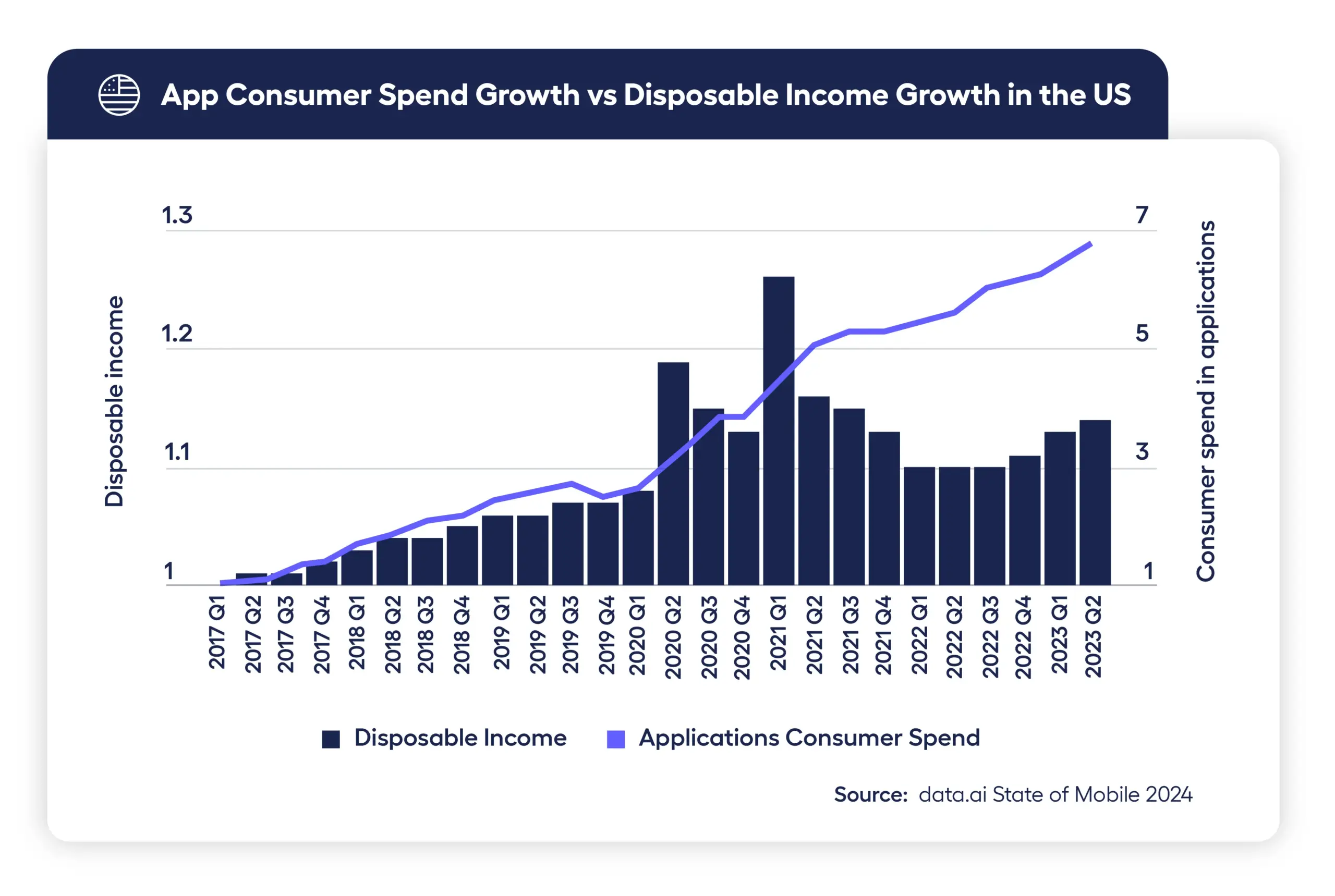In the fast-evolving world of mobile applications, in-app ads monetization stands out as a powerful strategy for generating revenue without solely relying on paid downloads or subscriptions. This approach allows developers and marketers to leverage advertising networks to display targeted ads within apps, turning user engagement into sustainable income. Whether you’re a solo developer building your first utility app or a marketing team scaling a popular entertainment platform, understanding the nuances of ads monetization can help balance profitability with positive user experiences. In this comprehensive guide, we’ll explore proven tactics, emerging trends for 2025, and practical tips to optimize your app’s earning potential while adhering to industry standards.
Understanding the Basics of In-App Ads Monetization
Before diving into advanced strategies, it’s essential to grasp the fundamentals of how in-app advertising works. Ads monetization involves integrating advertisements from third-party networks into your mobile app, where you earn revenue based on impressions, clicks, or conversions. This model is particularly appealing for free-to-download apps, as it provides an accessible entry point for users while creating ongoing income streams for creators.
Types of In-App Ads and Their Revenue Models
In-app ads come in various formats, each suited to different app categories and user behaviors. Banner ads, for instance, are static or animated displays at the top or bottom of the screen, ideal for non-intrusive placement in productivity tools. They typically operate on a cost-per-mille (CPM) basis, where you earn per thousand impressions.
Interstitial ads, full-screen promotions that appear during natural breaks like level transitions in games, offer higher engagement and thus better CPM rates, often ranging from $5 to $10 depending on the region. Rewarded videos allow users to watch a short clip in exchange for in-app rewards, boosting retention while generating revenue through cost-per-view (CPV) models.
Native ads blend seamlessly with your app’s content, mimicking the look and feel of organic elements to reduce disruption. These are especially effective for content-driven apps, with earnings tied to click-through rates (CTR). Finally, playable ads let users interact with a mini-demo, common in gaming apps, and can yield high conversion rates for advertisers.
Choosing the right mix depends on your app’s audience. For example, if you’re targeting how to monetize mobile apps with ads in a casual gaming context, rewarded videos might outperform banners due to voluntary engagement.
Why Ads Monetization Matters in 2025
With global app revenue projected to exceed $500 billion by 2025, ads monetization accounts for a significant portion, especially amid privacy regulations like Apple’s App Tracking Transparency (ATT) and Google’s Privacy Sandbox. These changes emphasize contextual targeting over personal data, making it crucial for developers to adopt ethical practices. Marketers, on the other hand, must focus on high-quality creatives that resonate without feeling invasive, ensuring long-term user loyalty.
Best Practices for Developers Implementing In-App Ads
Developers play a pivotal role in the technical integration and user-facing aspects of ads monetization. The goal is to embed ads smoothly without compromising app performance or user satisfaction, which directly impacts retention and reviews.
Selecting the Right Ad Network for Your App
Start by evaluating ad networks based on your app’s niche and scale. For beginners wondering about the best ad networks for app developers, consider factors like fill rates, payout thresholds, and support for your platform (iOS or Android). Integrate software development kits (SDKs) from multiple networks via mediation platforms to maximize fill rates and automate bidding for the highest-paying ads.
Avoid common pitfalls like overloading with too many SDKs, which can bloat app size and slow loading times. Test integrations in a staging environment to ensure compatibility with your app’s tech stack, such as Unity or React Native.
Optimizing Ad Placement and Frequency
Strategic placement is key to effective in-app advertising strategies. Position banners in low-interaction areas to minimize accidental clicks, which can lead to poor ad quality scores. For interstitials, time them during loading screens or after completing a task to avoid interrupting core functionality.
Frequency capping prevents ad fatigue; limit displays to 3-5 per session for most apps. A/B testing different placements can reveal what works best— for instance, in utility apps, end-of-session ads might perform better than mid-use ones. Tools like Firebase Analytics help track metrics such as session length post-ad exposure.
Ensuring Technical Compliance and Performance
Adhere to platform-specific guidelines, like Google Play’s policies on deceptive ads or Apple’s rules against misleading content. Implement lazy loading for ads to reduce battery drain and data usage, enhancing user experience on mobile devices.
Monitor app crashes related to ad SDKs using crashlytics tools. In 2025, with rising concerns over data privacy, ensure your ads comply with GDPR and CCPA by obtaining user consent transparently. This not only builds trust but also avoids penalties that could derail your monetization efforts.
Strategies for Marketers to Maximize Ads Revenue
While developers handle the backend, marketers drive the frontend optimization, focusing on audience insights and campaign refinement to boost earnings from in-app ads.
Targeting and Personalization Techniques
Effective targeting starts with understanding user segments. Use anonymized data like app usage patterns to deliver relevant ads— for example, showing fitness gear promotions in a health tracking app. Long-tail keywords in ad campaigns, such as “strategies for monetizing free mobile apps with targeted ads,” can attract niche advertisers willing to pay premium rates.
Leverage machine learning from ad networks to predict user preferences without invasive tracking. This aligns with 2025 trends toward privacy-first advertising, where contextual signals like app category and time of day replace device IDs.
Analyzing and Iterating on Ad Performance
Regular analysis is non-negotiable. Track key performance indicators (KPIs) such as effective cost per mille (eCPM), fill rate, and CTR using dashboards from your ad network. If eCPM dips below $2, investigate factors like ad relevance or seasonal trends.
Iterate by experimenting with ad creatives; video ads often yield 20-30% higher engagement than static ones. Collaborate with developers to adjust placements based on data— perhaps shifting from banners to natives if CTR improves. Tools like Adjust or AppsFlyer provide deeper insights into attribution, helping attribute revenue accurately.
Collaborating with Developers for Holistic Success
Marketers should work hand-in-hand with developers to align on goals. Jointly review user feedback on ads to refine strategies, ensuring that monetization doesn’t compromise the app’s core value. For instance, in educational apps, prioritize non-disruptive formats to maintain learning flow.
App Ad Policies and Responsible Advertising Practices
Navigating policies is critical to sustainable ads monetization. Major app stores have strict rules to protect users, and violations can lead to app removal.
Key App Store Ad Policies
Google Play requires ads to be clearly distinguishable from app content and prohibits those that mimic system notifications. Apple’s App Store Review Guidelines emphasize user consent for data collection and ban ads that encourage excessive tapping.
For game apps specifically, policies mandate that ads don’t interfere with gameplay mechanics, such as blocking controls. Always disclose ad presence in your app description to set expectations.
Promoting Responsible Advertising
Responsible practices go beyond compliance. Avoid aggressive tactics like unskippable ads that frustrate users, leading to uninstalls. Instead, focus on value exchange, like rewarded ads that benefit both parties.
In 2025, emphasize transparency in data usage and provide easy opt-out options. This builds EEAT (Experience, Expertise, Authoritativeness, Trustworthiness) for your app, making it more appealing to users and advertisers alike. For more information on optimizing your ad strategies, visit Traffic Bets.
Most Trusted Platforms for Ads Monetization
To kickstart your journey, here are three highly regarded ad networks that developers and marketers swear by for reliable payouts and robust features.
- Google AdMob: A powerhouse for seamless integration and high fill rates, perfect for beginners seeking global reach and detailed analytics to scale your in-app ads monetization efforts.
- Unity Ads: Ideal for game developers, offering engaging formats like playable ads that boost user interaction and revenue without complex setups.
- AppLovin: Known for its mediation tools and AI-driven optimization, helping marketers achieve higher eCPM through targeted campaigns in diverse app categories.
These platforms are trusted for their compliance with privacy standards and consistent support, making them excellent choices for long-term partnerships.
Frequently Asked Questions (FAQs)
What is the best way to start with in-app ads monetization for a new app?
Begin by choosing a user-friendly network like AdMob, integrate a single ad format like banners, and monitor user feedback before expanding. Focus on apps with high engagement to ensure viable revenue.
How can I avoid user churn due to ads in my mobile app?
Implement frequency caps, use rewarded ads for opt-in experiences, and A/B test placements. Prioritize user value to keep retention high while monetizing.
What are the top trends in ads monetization for 2025?
Privacy-focused targeting, hybrid models combining ads with subscriptions, and AI-optimized bidding are key. Expect growth in native and playable ads for better engagement.
How do long-tail keywords help in ads monetization strategies?
They attract specific advertiser queries, like “effective in-app ad placement for productivity apps,” leading to higher bid values and more relevant ads.
Is it possible to combine ads with other monetization methods?
Yes, hybrid approaches like freemium with ads for free users and subscriptions for ad-free access are increasingly popular, diversifying revenue streams.
Conclusion
Mastering in-app ads monetization requires a blend of technical savvy, marketing insight, and ethical considerations. By following these best practices— from selecting optimal ad formats and networks to analyzing performance and adhering to policies— developers and marketers can unlock substantial revenue in 2025’s competitive landscape. Remember, the key is user-centric design: ads should enhance, not hinder, the app experience. For deeper dives into advanced strategies or tools, explore resources from trusted platforms and stay updated with industry shifts. Start implementing these tips today to transform your app into a profitable venture.




